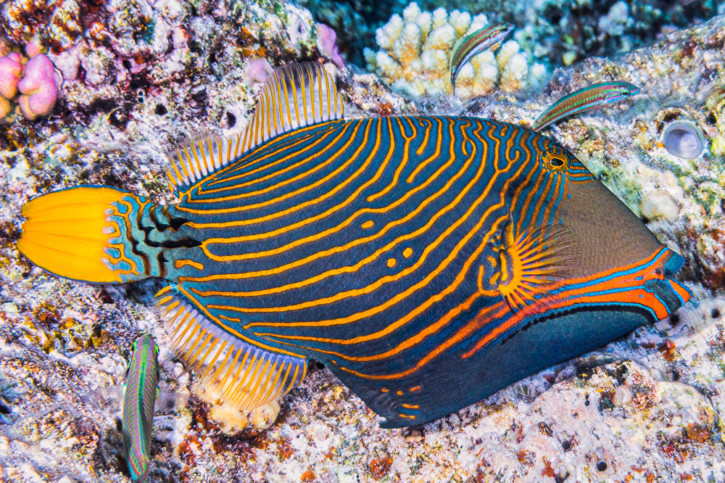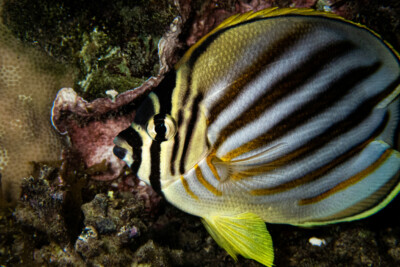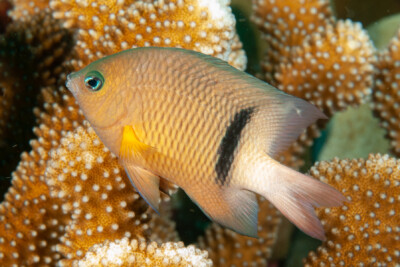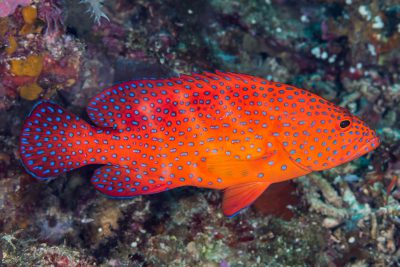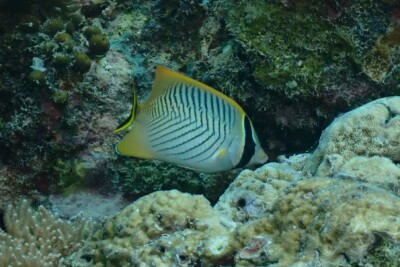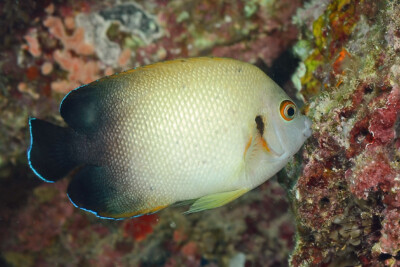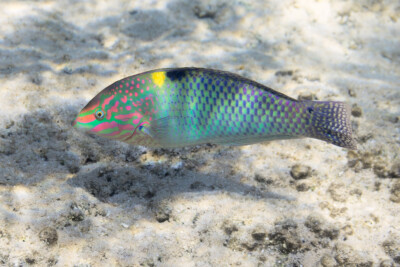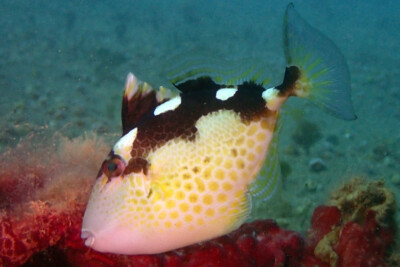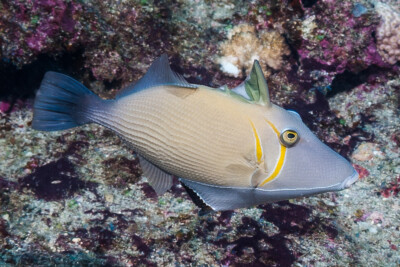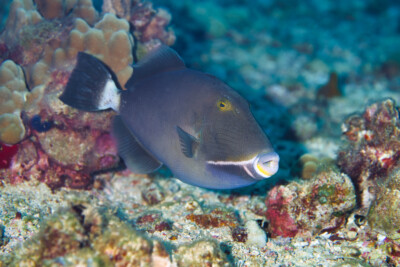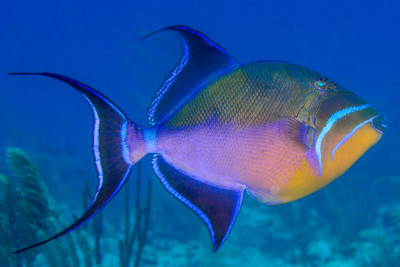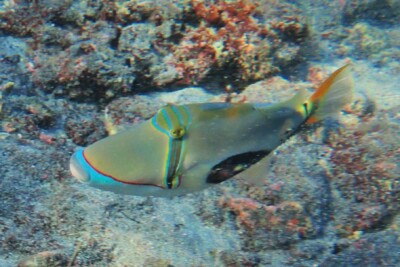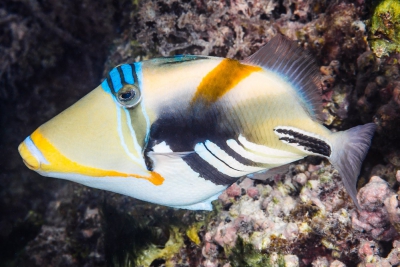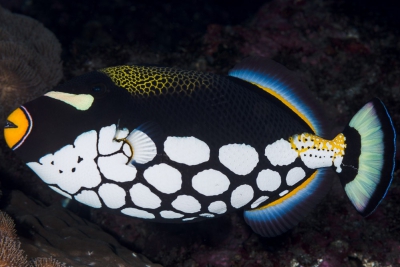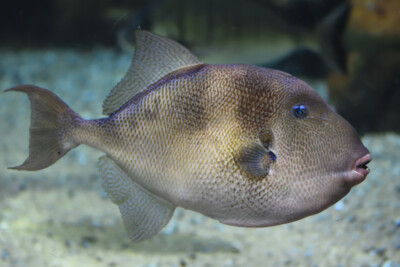orange-lined triggerfish
| Family | Balistidae |
|---|---|
| Genus | Balistapus |
| IUCN category (World) | LC |
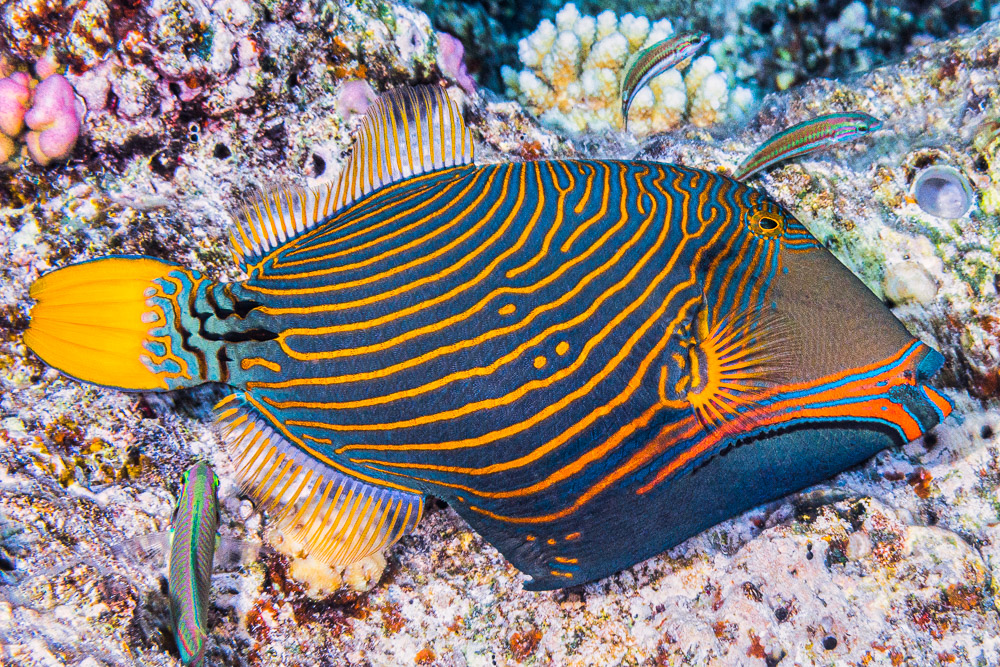

Introduction
Balistapus undulatus, or orange-lined triggerfish, is a fish that lives in the tropical waters of the Indo-Pacific. It can be found along the East African coast, from the Red Sea to South Africa, as well as in the Marquesas Islands and Tuamotu. In the north, it is found up to the Sea of Japan, and in the south, as far as the Great Barrier Reef and New Caledonia.
This territorial fish frequents protected coral-rich areas. It is a major predator of sea urchins and also feeds on a variety of benthic animals.
Who is it?
Morphology
-
Type
-
Average size26 cm
-
Maximum size30 cm
-
Longevity10 year
-
Patterndiagonal stripes
-
Type
-
Average size26 cm
-
Maximum size30 cm
-
Longevity10 year
-
Patterndiagonal stripes
How to recognize This fish ?
The orange-lined triggerfish can reach up to 30 cm in length. Its trapezoidal and flattened body, covered with large scales, is adorned with a very distinctive coloration that makes it easy to identify.
Its coloration, usually greenish to brownish, is marked by diagonal orange lines that run across the entire body, except for the cheeks in adult individuals. The slightly rounded caudal fin is also tinted orange, and a large circular black spot covers the base of this fin.
Like other Triggerfish, it has a first dorsal fin made up of three spines. The first spine, long and sharp, can be locked in a vertical position, even after the fish's death. This feature serves to deter predators and also to anchor the fish in narrow cavities when resting, preventing it from being carried away by currents. The second dorsal fin is symmetrical to the anal fin, while the pelvic fins are reduced to a single spine.
Two dark lines are visible on the caudal peduncle, formed by spiny scales. Finally, its small mouth, armed with sharp teeth, allows it to break the shells of its prey.
Sexual dimorphism
Males grow larger than females.
Behaviour & Life cycle
-
dietcarnivorous
-
Sociabilitysolitary
-
territorialNo
-
Way of livingdiurnal
The orange-lined triggerfish is a rather solitary fish that is rarely encountered in groups. Its diet is very varied: it consumes algae, fish, mollusks, tunicates, sponges, hydrozoans, and echinoderms. It is considered a key predator, particularly because it regulates populations of the burrowing sea urchin Echinometra mathaei. By limiting its proliferation, the orange-lined triggerfish actively contributes to maintaining the structure and health of reefs.
At night, they hide in crevices and cavities, where they wedge themselves by raising their dorsal fin.
Reproduction
-
Reproductionovovivipare
The orange-lined triggerfish is an ovoviviparous fish. The male descends to the bottom, flexing its body laterally while beating its dorsal and caudal fins to dig a nest in the sand.
The eggs are laid in the nest, in a single spongy cluster. The male guards the eggs until hatching, and sometimes both adults do. Hatching occurs at night.
Harmless species
This species does not pose a particular danger to humans when encountered in its natural environment.
Origin and distribution
Geographic distribution & Conservation
Orange-lined triggerfish is widely distributed in the Indo-Pacific, from the coasts of East Africa and the Red Sea to Durban, South Africa. To the east, it is present as far as the Tuamotu, Marquesas, and Line Islands. It is also found in the Andaman and Nicobar Islands, Indonesia, New Caledonia, and up to the Australian Great Barrier Reef. Its range extends north to southern Japan. A sighting in Oahu (Hawaii) could correspond to a wandering individual or an introduction related to the aquarium trade.
Conservation status of populations (IUCN)
What is its habitat?
Natural environment characteristics
-
Temperature25 - 29 °C
-
Depth2 - 50 m
Biotope presentation
A marine and demersal species, the orange-lined triggerfish mainly inhabits coral reefs. In Papua New Guinea (Kimbe Bay), it has been observed in a wide variety of habitats, highlighting its generalist nature at the macro-habitat level. Within reef zones, it shows a high level of habitat plasticity. The species occurs between 2 and 50 meters deep.
Species of the same biotope
To go further
Sources & Contributions
Participation & Validation
The Fishipedia team and specialist contributors are committed to providing high-quality content. However, although the information comes from scientific sources or testimonials from specialists, the cards may contain inaccuracies.

Silvia Gomez
Translation
Translation done with the valuable contribution of our translators, who make this information available to a wider audience. We sincerely thank them for their commitment.

Marine Kassel
Scientific partners
Tags
Species of the same family
Species of the same biotope
